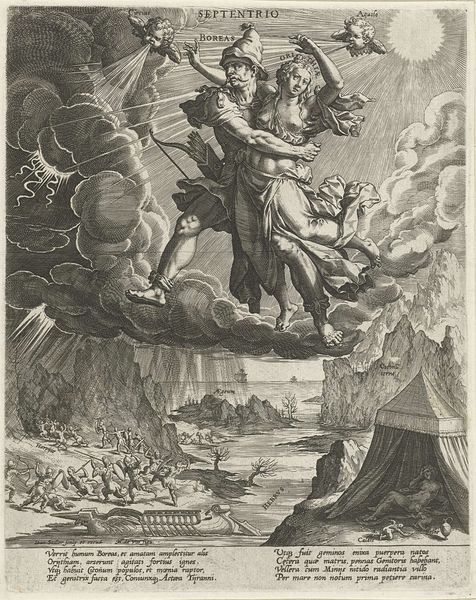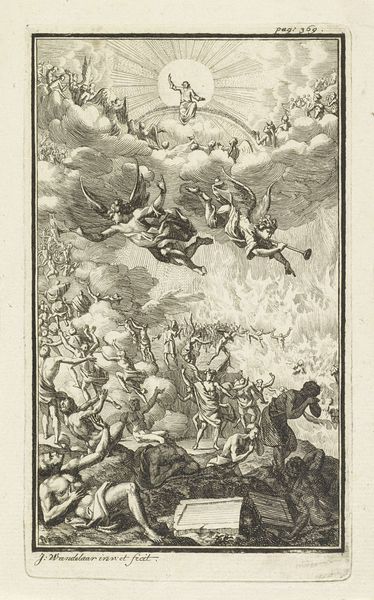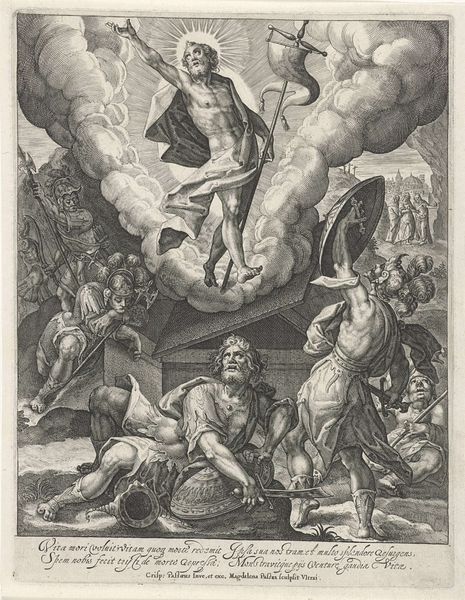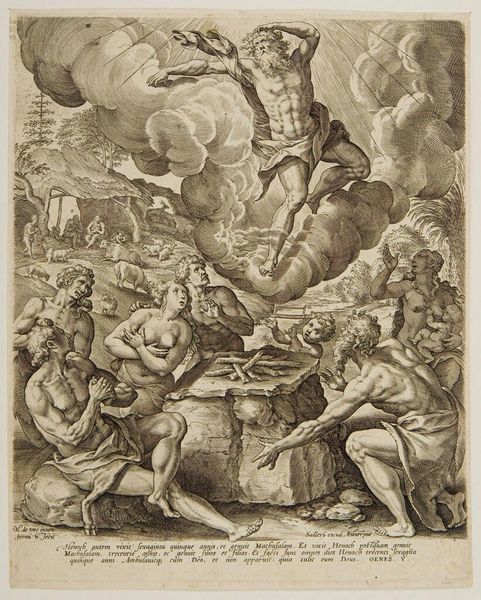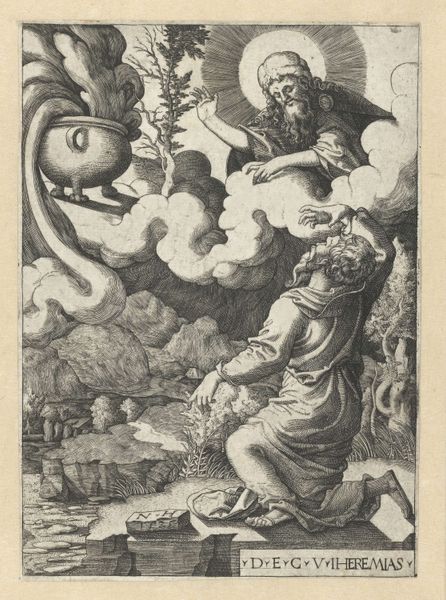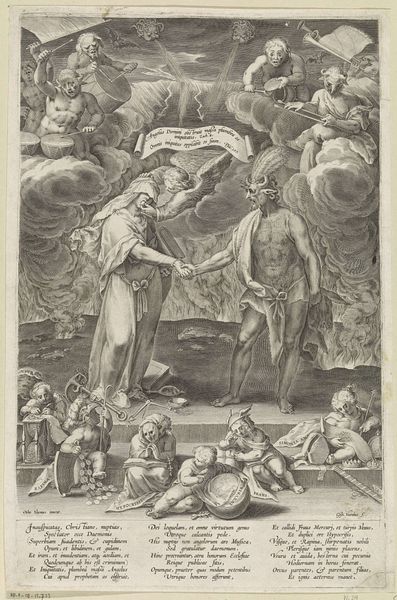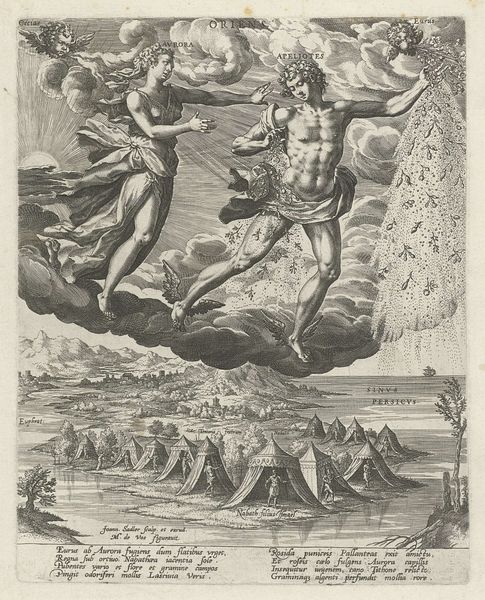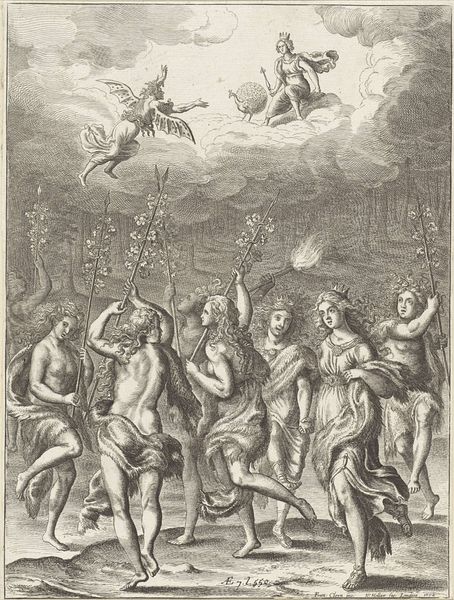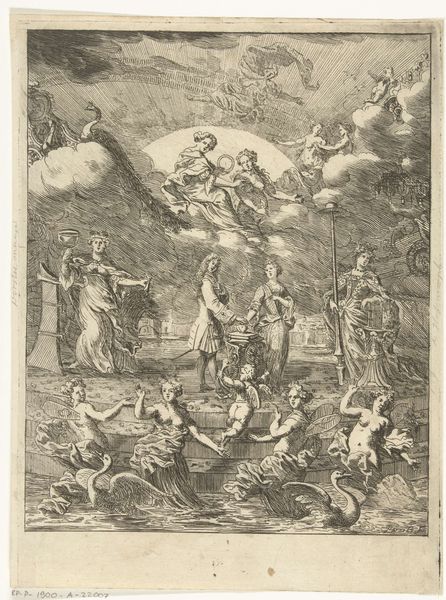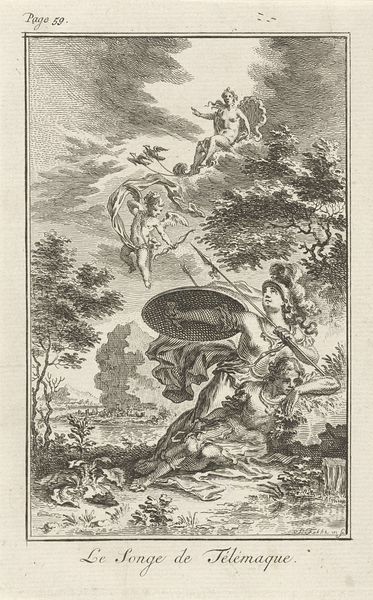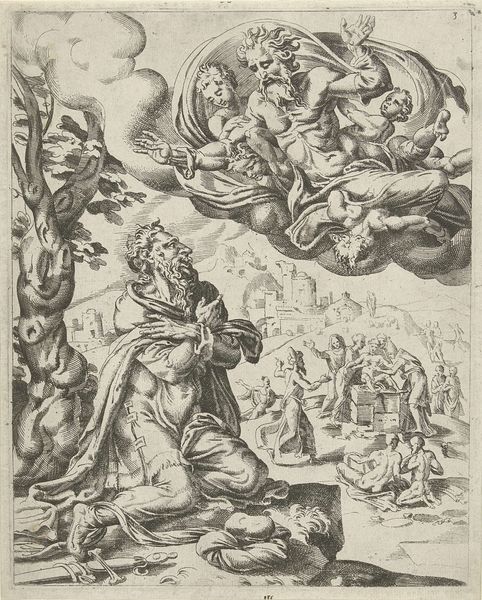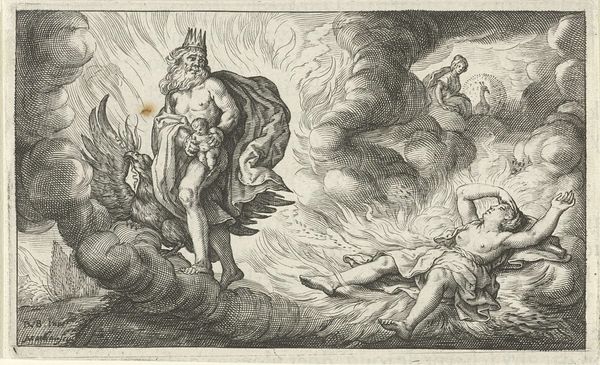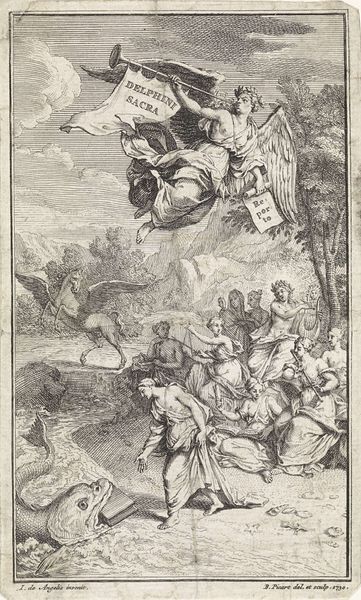
print, engraving
#
allegory
# print
#
landscape
#
figuration
#
11_renaissance
#
northern-renaissance
#
engraving
Dimensions: height 252 mm, width 203 mm
Copyright: Rijks Museum: Open Domain
Curator: Welcome. Today, we are looking at "Westenwind", an engraving created sometime between 1560 and 1600 by Johann Sadeler I, currently residing here at the Rijksmuseum. Editor: It's striking how busy the composition is. The eye bounces between figures, landscape, text… and yet, somehow, it’s all elegantly balanced in shades of grey. Curator: Indeed. Sadeler utilizes allegory within a carefully crafted landscape. We see Flora, goddess of flowers, accompanied by Zephyrus, the West Wind. Their presence is meant to evoke springtime and rebirth. Below, the ground is populated with other figures, almost frozen in place. The scene's very ordered, but the symbolic associations are quite fertile. Editor: Symbolism definitely abounds. Note how Flora is rendered: overflowing with flowers and plant life. This emphasizes her role as the giver of life and growth. Her connection to springtime and renewal is almost palpable, isn’t it? She is presented as fully mature but approachable with the way she has turned her glance to the observer, while her flowing hair enhances the lively moment represented. Curator: Absolutely. Zephyrus is blowing flowers into the landscape. He’s an agent of transformation, isn’t he, acting almost like a catalyst to Flora’s bounty. Observe the clouds of smaller cherubic figures above, enhancing the air of classical mythology so crucial to this Renaissance interpretation of springtime's symbolic birth. There's also a deliberate use of contrasting planes. Editor: Precisely, the lower level with static mortal-looking bodies and a distant range that blends towards an idyllic vista on one side; and then the other part above it: dynamically composed yet symbolically packed and layered! And you could analyze each section independently regarding its tonal variety. Curator: In the Northern Renaissance tradition, engraving lends itself particularly well to this layered density of visual information, right? Consider how a single line can create both depth and surface detail. The cross-hatching in the sky creates an active, textured background, while the fine lines used to render the figures highlight their individual beauty. The script as well reminds of that time; overall the technique and symbolic elements underscore the artist's profound understanding of how to weave together nature, culture, and mythology into a coherent whole. Editor: It seems, despite its complexity, that the success of the image emerges precisely from that interwoven nature of things; perhaps this points toward its timeless and continuing appeal.
Comments
No comments
Be the first to comment and join the conversation on the ultimate creative platform.
